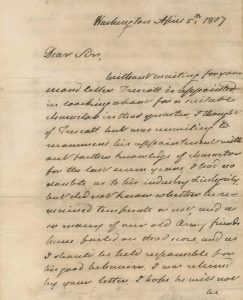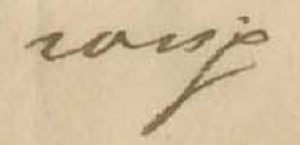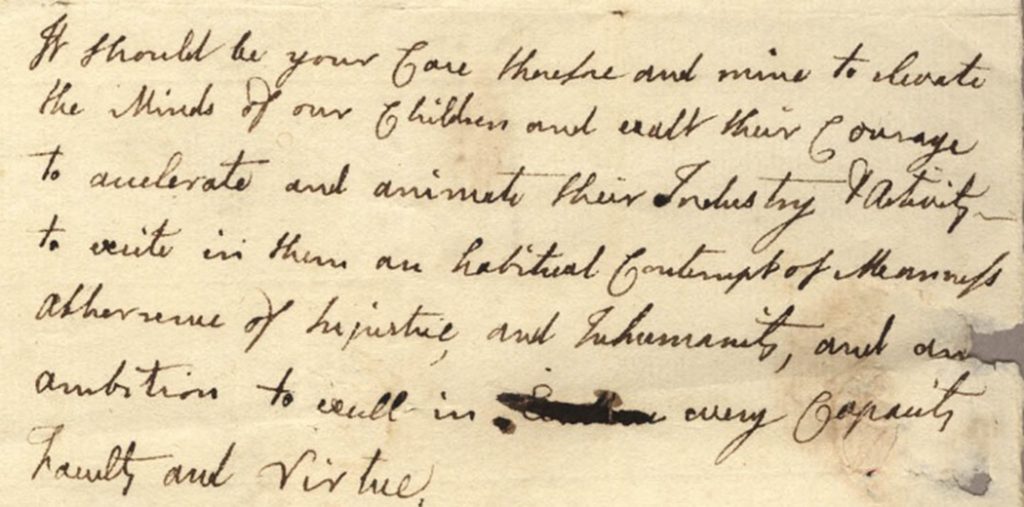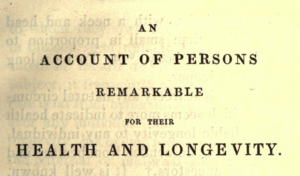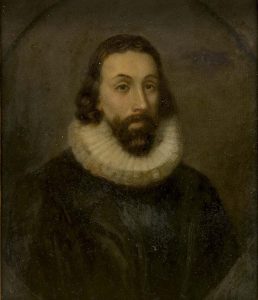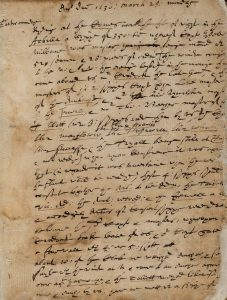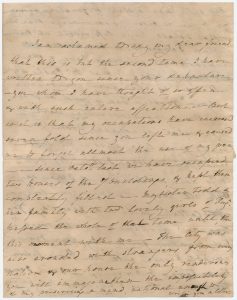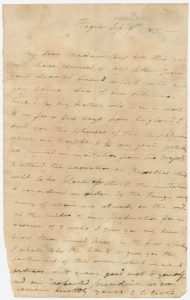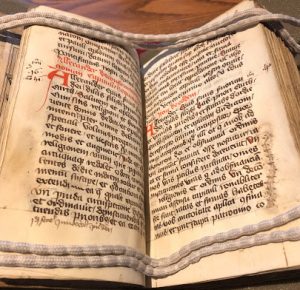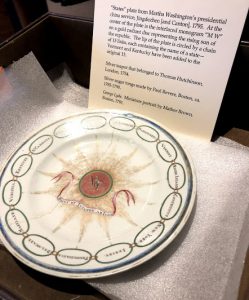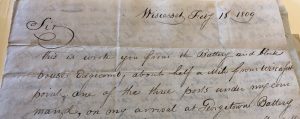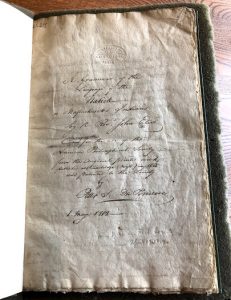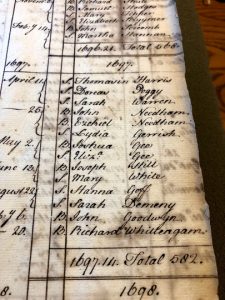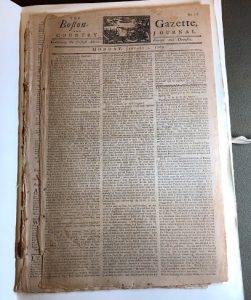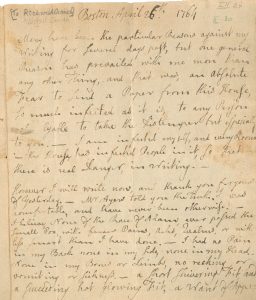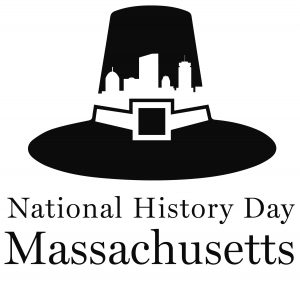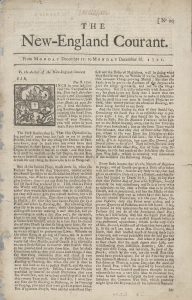By Angela Tillapaugh, Library Assistant
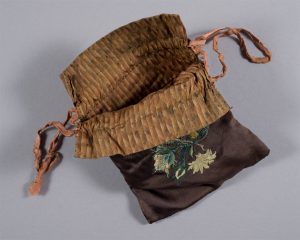
The image above shows a brown silk purse with floral embroidery owned by Sarah Leverett. Small drawstring purses, sometimes called reticules, became popular in the early 19th century. They were usually made fine materials like silk and velvet, and some decorated with elaborate embroidery or beading to make them stand out. Most were secured by a drawstring on the top and held around the wearer’s wrist. Previously, carrying small fashionable purses was not standard for early Americans.
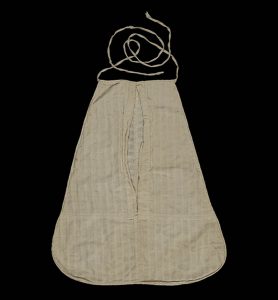
Women used to carry their belongings in pockets, like the one above owned by Abigail Adams. Unlike menswear, pockets were separate garments that would be tied around the waist underneath an outer skirt with slits cut into it so the wearer could easily access the pouch. Unlike the delicate embroidered purses, pockets were large practical garments usually made of sturdy cotton that could fit many of the wearer’s belongings. Reticules replaced pockets around the early 19th century when full dresses with layered petticoats fell out of fashion. Dresses with high waistlines and slim fitting skirts became popular among fashionable women. Slim fitting skirts were not conducive to hiding large pockets, which were considered undergarments and inappropriate to see through a dress.[i] To account for the loss of pockets, many started carrying small purses like the one owned by Sarah Leverett. Some American women fought against the loss of the pocket, arguing that carrying a bag could never provide the same freedom having your belongings tucked away in a pocket. Other women argued that the opposite was true, the reticules gave women more freedom because they were not weighed down by heavy pockets.[ii]
Regardless, the pocket never made a significant comeback in American women’s fashion, but the purse continued to evolve. Luggage manufacturers like Louis Vuitton introduced the early modern purse by making smaller versions of their suitcases and calling them “hand-bags”.[iii] These purses were much more secure than the silk drawstring bags and allowed the owner to carry more belongings with them then the pockets of centuries prior. The purse has certainly stood the test of time, continuing to modernize and change with the times to meet the needs of the wearer.
Further reading on Abigail Adam’s pocket: www.masshist.org/object-of-the-month/objects/abigail-adams-pocket-2009-12-01
[i] Danford, Sara. “The History of the Handbag,” May 31, 2017. https://womensmuseum.wordpress.com/2017/05/31/the-history-of-the-handbag/.
[ii] Trufelman, Avery, host. “Pockets: Articles of Interest #3.” 99 Percent Invisible (podcast). October 2, 2018. Accessed June 04, 2020.
[iii] Danford, Sara. “The History of the Handbag,” May 31, 2017. https://womensmuseum.wordpress.com/2017/05/31/the-history-of-the-handbag/.


